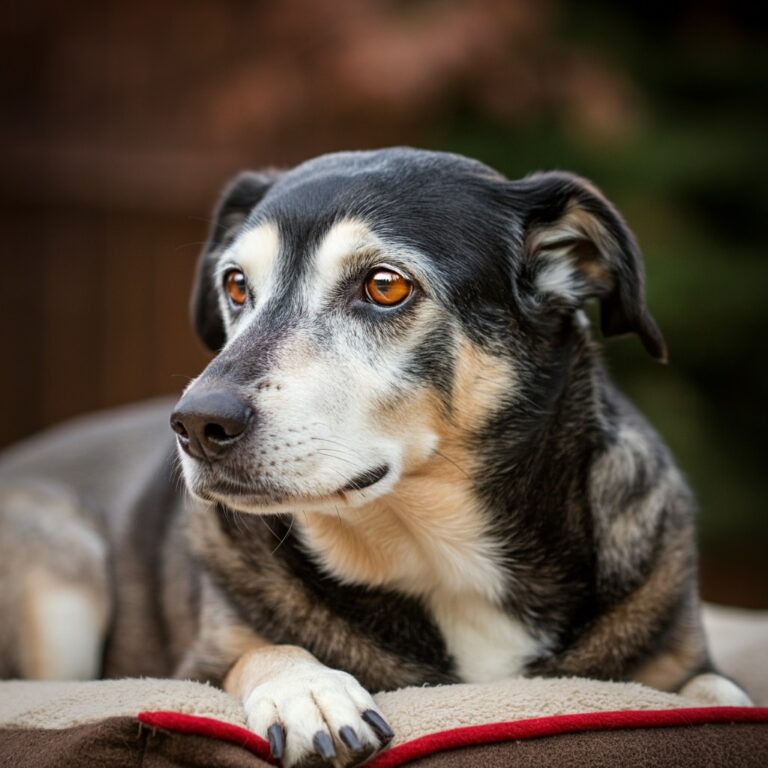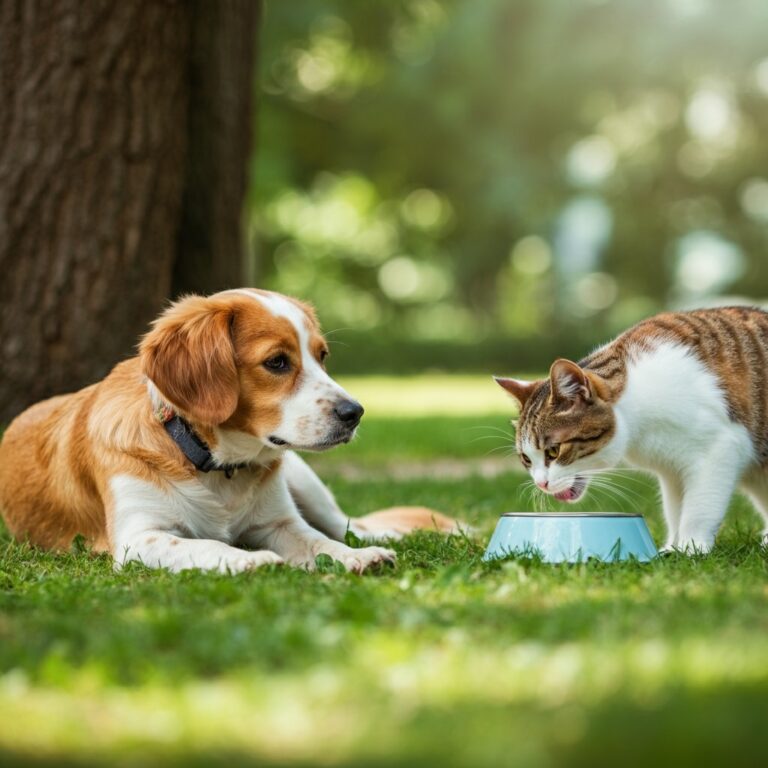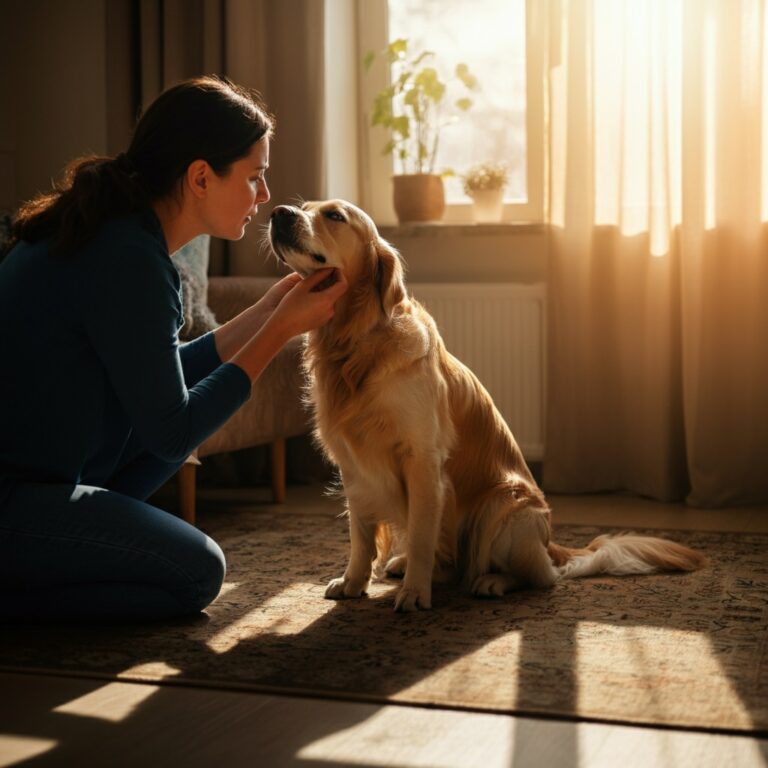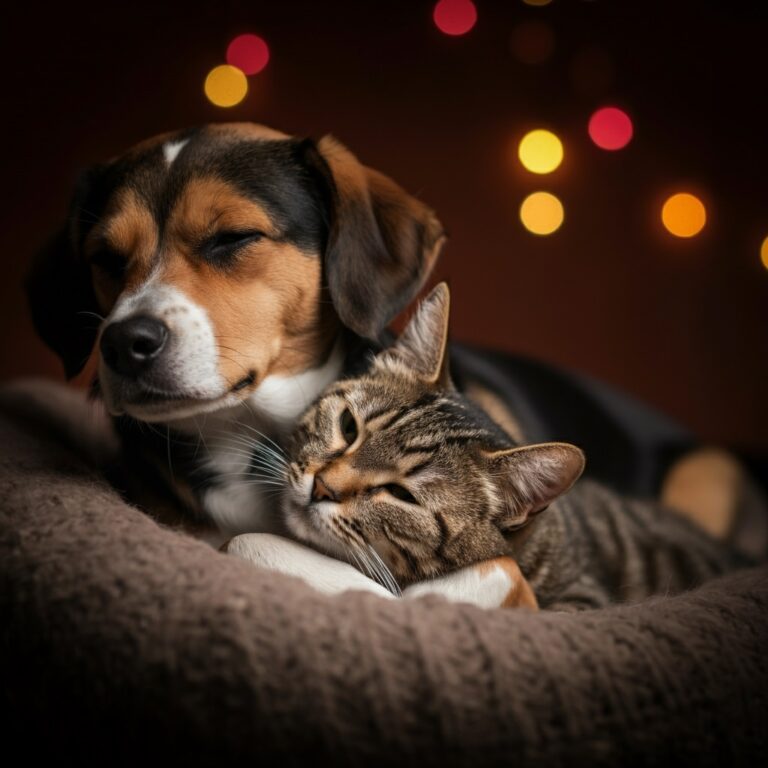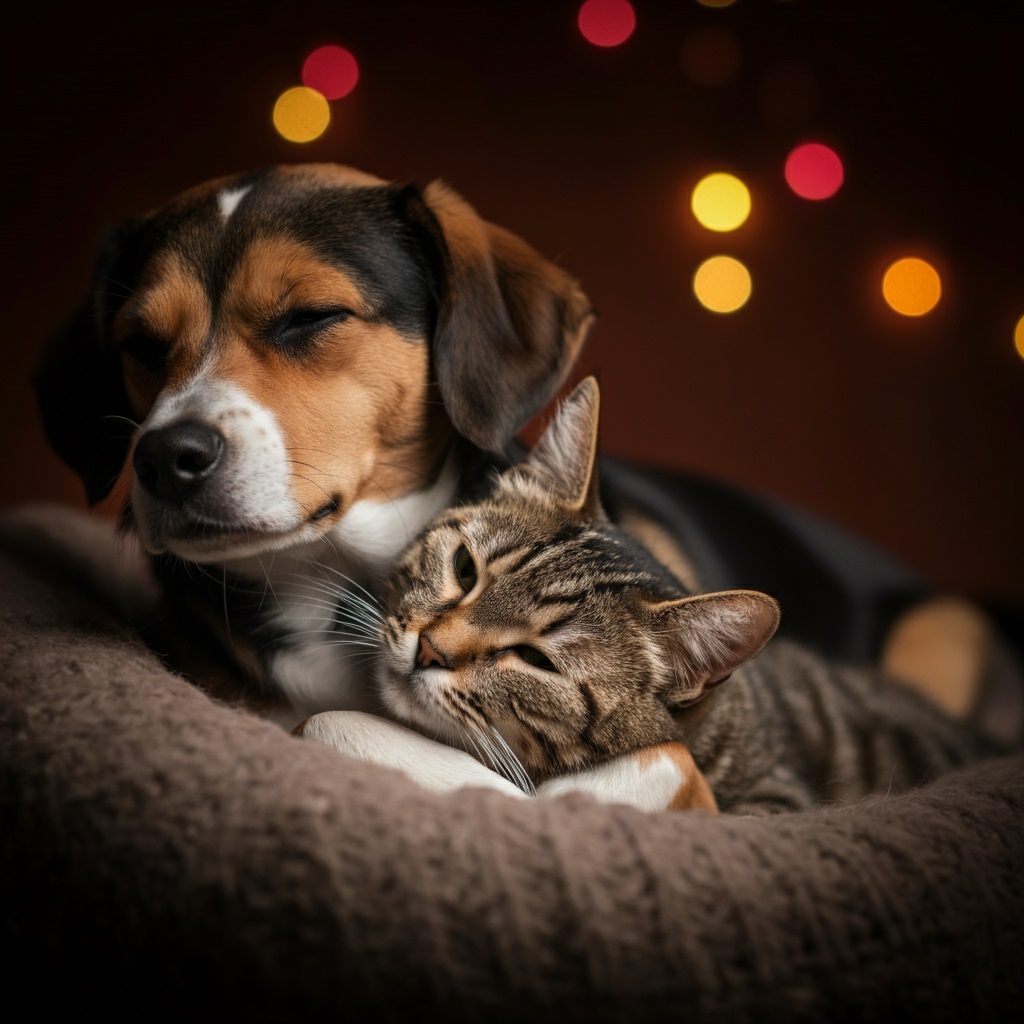
Most pet owners worry about their furry companions getting enough exercise, eating nutritious food, and staying up-to-date on vaccinations. But there’s one critical aspect of pet health that often gets overlooked: sleep. Just like humans, our pets need quality rest to maintain their physical health, mental well-being, and overall quality of life.
Poor sleep patterns in pets can lead to serious health complications, behavioral issues, and shortened lifespans. Understanding your pet’s sleep needs isn’t just about ensuring they’re comfortable—it’s about protecting their long-term health and happiness.
This comprehensive guide explores the vital role sleep plays in pet health, helping you recognize when your companion might be experiencing sleep issues and what you can do to optimize their rest for a healthier, longer life.
Understanding Pet Sleep Patterns
Pet sleep differs significantly from human sleep in both duration and structure. While humans typically sleep for one extended period during the night, most pets are polyphasic sleepers, meaning they take multiple sleep periods throughout a 24-hour cycle.
Dogs and Sleep
Dogs require 12-14 hours of sleep daily, with puppies and senior dogs needing even more. Their sleep cycles are shorter than humans, lasting about 45 minutes compared to our 90-minute cycles. Dogs spend approximately 10% of their sleep time in REM (Rapid Eye Movement) sleep, where dreaming occurs and important brain processing happens.
Unlike humans, dogs can fall asleep quickly and wake up alert almost instantly. This evolutionary trait helped wild canines survive by allowing them to respond rapidly to threats or opportunities.
Cats and Sleep
Cats are champion sleepers, averaging 13-16 hours of sleep per day. The phrase “cat nap” exists for good reason—felines are masters of light sleep, remaining semi-alert even while resting. This allows them to spring into action when prey appears or danger threatens.
Cats experience similar sleep stages to humans, including light sleep, deep sleep, and REM sleep. However, they spend only about 25% of their sleep time in deep sleep phases, with the remainder in lighter stages where they can wake instantly.
Other Pets
Small mammals like rabbits, guinea pigs, and hamsters have unique sleep patterns often tied to their prey animal status. Birds sleep differently depending on whether they’re diurnal or nocturnal species. Reptiles and fish have sleep-like states that researchers are still working to fully understand.
The Critical Connection Between Sleep and Physical Health
Quality sleep serves as the foundation for virtually every aspect of your pet’s physical health. During rest periods, their bodies perform essential maintenance and repair functions that simply cannot occur during waking hours.
Immune System Function
Sleep deprivation significantly compromises immune system effectiveness in pets. During deep sleep phases, the body produces cytokines—proteins that help fight infection, illness, and inflammation. Pets who don’t get adequate sleep become more susceptible to illnesses, take longer to recover from injuries, and may have reduced vaccine effectiveness.
Research has shown that chronically sleep-deprived animals have lower white blood cell counts and decreased antibody production, leaving them vulnerable to bacterial and viral infections that well-rested pets would easily fight off.
Growth and Tissue Repair
Growth hormone release occurs primarily during deep sleep phases. This makes adequate sleep particularly crucial for growing puppies and kittens, but it remains important throughout your pet’s life for tissue repair and maintenance.
During sleep, your pet’s body repairs damaged muscle tissue, heals wounds, and regenerates cells throughout their organs. Pets recovering from surgery, illness, or injury require even more sleep to support their healing processes.
Metabolic Regulation
Sleep plays a vital role in regulating hormones that control hunger, satiety, and metabolism. Sleep-deprived pets often experience disruptions in leptin (the hormone that signals fullness) and ghrelin (the hormone that triggers hunger), leading to overeating and weight gain.
Chronic sleep deprivation can also affect insulin sensitivity, potentially contributing to diabetes risk in predisposed animals. Maintaining healthy sleep patterns helps regulate blood sugar levels and supports optimal metabolic function.
Sleep’s Impact on Mental Health and Behavior
The connection between sleep and mental health in pets is just as strong as the physical health relationship. Adequate sleep supports cognitive function, emotional regulation, and behavioral stability.
Cognitive Function and Learning
During REM sleep, pets consolidate memories and process information learned during waking hours. Dogs learning new commands or tricks need sufficient sleep to retain this information effectively. Similarly, cats adjusting to new environments or routines require adequate rest to adapt successfully.
Sleep deprivation impairs concentration, problem-solving abilities, and the capacity to learn new behaviors. Pets who don’t get enough sleep may appear “stubborn” or slow to learn when they’re actually cognitively impaired by fatigue.
Emotional Regulation
Well-rested pets are better equipped to handle stress, adapt to changes, and maintain stable moods. Sleep deprivation can lead to increased anxiety, irritability, and reactive behaviors. Dogs may become more prone to snapping or aggressive responses when tired, while cats might hide more or become less social.
Sleep helps reset the nervous system and process emotional experiences from the day. Pets who experience trauma or significant stress need additional sleep to help their minds recover and adapt.
Behavioral Problems
Many common behavioral issues in pets can be traced back to inadequate sleep. Hyperactivity, excessive barking or meowing, destructive behaviors, and attention-seeking can all be symptoms of sleep deprivation.
Puppies and kittens are particularly susceptible to overtiredness, which can manifest as seemingly boundless energy followed by crashes, similar to overtired children. Establishing proper sleep routines early helps prevent these behavioral challenges.
Common Sleep Disorders in Pets
Just like humans, pets can suffer from various sleep disorders that impact their health and quality of life. Recognizing the signs of these conditions is crucial for early intervention.
Sleep Apnea
Brachycephalic (flat-faced) breeds like Bulldogs, Pugs, and Persian cats are particularly prone to sleep apnea due to their compressed airways. This condition causes breathing interruptions during sleep, leading to poor sleep quality and potential oxygen deprivation.
Signs of sleep apnea include loud snoring, gasping during sleep, restless sleep, and excessive daytime sleepiness. Left untreated, sleep apnea can contribute to heart problems and other serious health complications.
Continues after advertising
Insomnia and Sleep Disturbances
Pets can experience insomnia due to pain, anxiety, environmental factors, or underlying medical conditions. Senior pets often develop insomnia related to cognitive dysfunction syndrome (similar to dementia in humans) or arthritis pain that worsens when lying down.
Environmental factors such as noise, temperature changes, or disruptions to routine can also cause sleep disturbances in sensitive pets.
REM Sleep Behavior Disorder
Some pets, particularly senior dogs, may develop REM sleep behavior disorder, where they act out their dreams physically. This can be dangerous if they injure themselves or others during sleep episodes.
Narcolepsy
While rare, narcolepsy can occur in pets, causing sudden episodes of sleep during normal waking hours. Certain breeds, including Dobermans and Labradors, have genetic predispositions to this condition.
Creating the Optimal Sleep Environment
The environment where your pet sleeps significantly impacts their sleep quality and overall health. Small adjustments to their sleeping area can make substantial improvements to their rest.
Temperature and Comfort
Pets sleep best in slightly cool environments, similar to humans. The ideal temperature range is typically 65-70°F (18-21°C), though this can vary by species, breed, and individual preference.
Provide comfortable bedding appropriate for your pet’s size, age, and any health conditions. Orthopedic beds can be particularly beneficial for senior pets or those with joint issues.
Lighting and Darkness
Most pets benefit from a dark, quiet sleeping environment. Consider blackout curtains if your pet sleeps in a room with significant light pollution. However, some pets may prefer a small night light for security, particularly rescue animals with anxiety issues.
Noise Management
Consistent, low-level background noise can help mask disruptive sounds that might wake your pet. White noise machines or soft music designed for pets can create a more peaceful sleep environment.
Location and Security
Choose a sleeping location that offers your pet security and comfort. Dogs often prefer sleeping near their family members, while cats may choose elevated locations where they feel safe and can observe their surroundings.
Age-Related Sleep Changes
Your pet’s sleep needs and patterns change significantly throughout their lifetime, requiring adjustments to their care routine.
Puppies and Kittens
Young animals need 18-20 hours of sleep daily to support rapid growth and development. Their sleep is often deeper and more frequent than adult animals. Establishing good sleep routines during this period sets the foundation for healthy sleep patterns throughout life.
Puppies and kittens should not be disturbed during sleep unless absolutely necessary, as growth hormone release occurs primarily during these rest periods.
Adult Pets
Adult pets typically settle into more predictable sleep patterns, often synchronizing somewhat with their human family’s schedule. This is the time to maintain consistent routines and monitor for any changes that might indicate health issues.
Senior Pets
Older pets often experience changes in sleep patterns, including more frequent waking, lighter sleep, and sometimes increased total sleep time. They may also develop age-related conditions that affect sleep quality, such as arthritis pain or cognitive dysfunction.
Senior pets benefit from extra comfortable bedding, easier access to sleeping areas, and potentially adjusted sleeping locations to accommodate mobility limitations.
Recognizing Sleep Problems in Your Pet
Many pet owners don’t realize their companion is experiencing sleep issues because the signs can be subtle or mistaken for other problems.
Signs of Poor Sleep Quality
Watch for excessive daytime sleepiness, difficulty waking up, restless sleep with frequent position changes, or unusual sleep locations. Behavioral changes such as increased irritability, reduced playfulness, or changes in appetite can also indicate sleep problems.
Physical signs might include snoring (especially if new or worsened), breathing irregularities during sleep, or signs of pain when lying down or getting up.
When to Consult Your Veterinarian
Sudden changes in sleep patterns, persistent snoring or breathing difficulties, signs of pain during rest, or behavioral changes associated with sleep should prompt a veterinary consultation.
Your veterinarian can evaluate potential underlying medical causes and recommend appropriate treatments or environmental modifications.
Supporting Healthy Sleep Habits
There are many practical steps you can take to promote healthy sleep in your pet.
Establishing Routines
Consistent daily routines help regulate your pet’s internal clock and promote better sleep quality. Try to maintain regular feeding times, exercise periods, and bedtime routines.
Exercise and Mental Stimulation
Adequate physical exercise and mental stimulation during waking hours promote better sleep quality. However, avoid vigorous exercise close to bedtime, as this can be stimulating rather than tiring.
Diet and Sleep
Feeding schedules can impact sleep quality. Most pets sleep better when they’re not too full or too hungry. Avoid large meals close to bedtime, but ensure your pet isn’t going to bed hungry.
Managing Stress and Anxiety
Address sources of stress or anxiety that might be disrupting your pet’s sleep. This might include separation anxiety, fear of storms, or changes in the household routine.
Read More👉 Why Omega-3s Are Essential for Your Pet’s Healthy Skin and Coat
Your Pet’s Path to Better Sleep Starts Now
Sleep isn’t a luxury for your pet—it’s a fundamental necessity for their health, happiness, and longevity. By understanding your companion’s unique sleep needs and creating an environment that supports quality rest, you’re making an investment in their overall well-being that will pay dividends for years to come.
Start by observing your pet’s current sleep patterns and environment. Make note of any concerning signs or behaviors, and don’t hesitate to discuss sleep-related concerns with your veterinarian during routine check-ups.
Remember that small changes can make big differences. Something as simple as adjusting the temperature in their sleeping area or establishing a consistent bedtime routine might dramatically improve your pet’s sleep quality and, by extension, their overall health and happiness.
